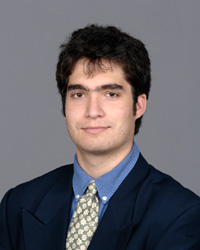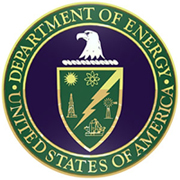
Amaury Betancourt (Environmental Engineering)
About DOE Fellow
Amaury Betancourt began his Master’s degree in Environmental Engineering at Florida International University (FIU) in Spring 2009. Amaury graduated from the University of Florida (UF) in Fall 2008 with a Bachelor’s degree in Chemical Engineering and a minor in Music Performance on the bassoon. His interests are clean and renewable energy, especially solar and wind, and eco-friendly engineering. He is also interested in environmental remediation and recycling. Mr. Betancourt is now an employee for Florida Department of Environmental Protection.
DOE Related Projects
Amaury Betancourt is currently working with Dr. Vekalet Tek of the Applied Research Center (ARC) in FIU. Amaury and Dr. Tek are researching the effects of mercury in anaerobic bacteria, particularly the sulfate-reducing bacteria Desulfovibrio desulfuricans. Different species of mercury will be added to the bacterial cultures and the accumulation of mercury inside the bacteria will be measured. This research will hopefully show which species of mercury accumulate more inside the bacteria and what reactions might occur between the bacteria and mercury. This can help in determining which species of mercury are more easily removed from contaminated water. The focus of this research is on the contaminated water of the East Fork Poplar Creek in the Oak Ridge Reservation operated by the DOE in Oak Ridge, Tennessee.
During Summer 2009, Amaury was a research intern with mentor Dr. Dawn M. Wellman at Pacific Northwest National Laboratory (PNNL), a U.S. Department of Energy (DOE) Laboratory in Richland, Washington. Amaury and Dr. Wellman tested a selective adsorbent called thiol-functionalized Self-Assembled Monolayers on Mesoporous Supports (thiol-SAMMS), developed at PNNL, to remove dissolved metals-contaminated water from the Berkeley Pit in Butte, Montana. The Berkeley Pit is a former open-pit mine that operated between 1955 and 1982. When the pit was shut down in 1982, groundwater and surface water runoff began accumulating in the pit. Today, the pit holds about 40 billion gallons of water contaminated with different types of dissolved metals. Thiol-SAMMS is selective for binding to different types of dissolved metals, especially mercury, silver, and copper. Because the Berkeley Pit water is acidic (pH ~ 2.5), samples had to be neutralized to pH ~ 7 before thiol-SAMMS was added. Thiol-SAMMS functions best within a pH range of 4 to 10. It was found that neutralization resulted in precipitation of a significant amount of dissolved metals, leaving a small concentration of dissolved metals in solution to adsorb onto thiol-SAMMS. Thus, neutralization removed the majority of dissolved metals in solution, but thiol-SAMMS may still be used as a secondary remedial technique to bring down dissolved metal concentrations to below drinking water standards. Further research is required to test how well thiol-SAMMS can work in combination with neutralization of Berkeley Pit water.
Amaury presented his internship research and tied for 3rd place in the DOE Fellows Poster Competition, which was held on October 15, 2009. Research results will also be presented in the Professional Poster Competition in the Waste Management Conference in Phoenix, Arizona, which is to be held March 7 to 11, 2010.
During his first semester as a DOE Fellow, Amaury worked on using a thermodynamic equilibrium model called Gibbs Energy Minimization Selektor (GEMS) that was developed at the Paul Scherrer Institut in Switzerland. GEMS can be used in modeling mercury speciation in water. The model can be applied to determine the conditions for formation of methylmercury. GEMS can help in understanding why mercury forms certain species in water and what reactions may take place with mercury species. Amaury completed a FIU/ARC DOE report on this research. Research results were also presented in the Student Poster Competition in the Waste Management Conference in Phoenix, Arizona, which was held March 1 to 5, 2009.
